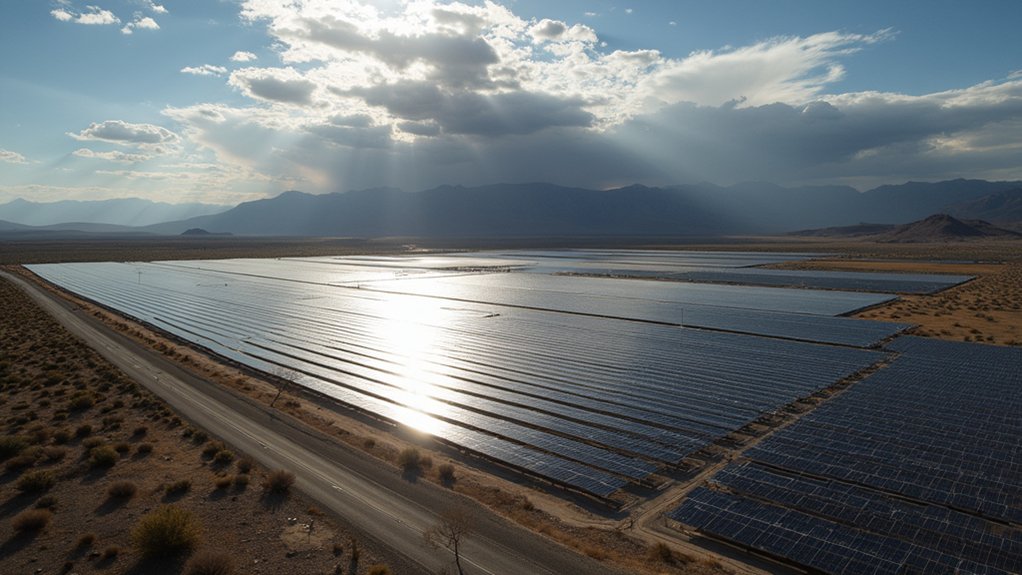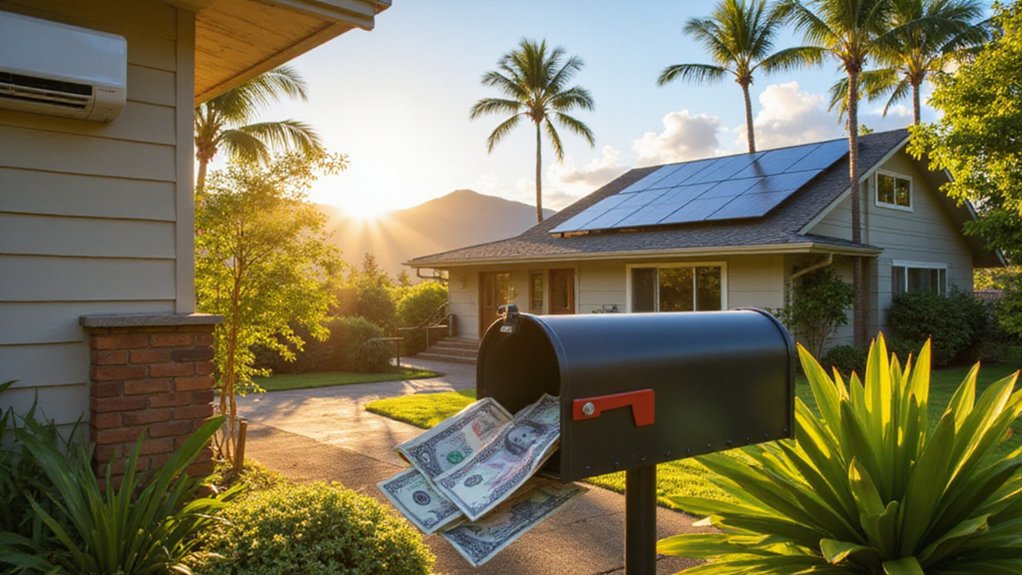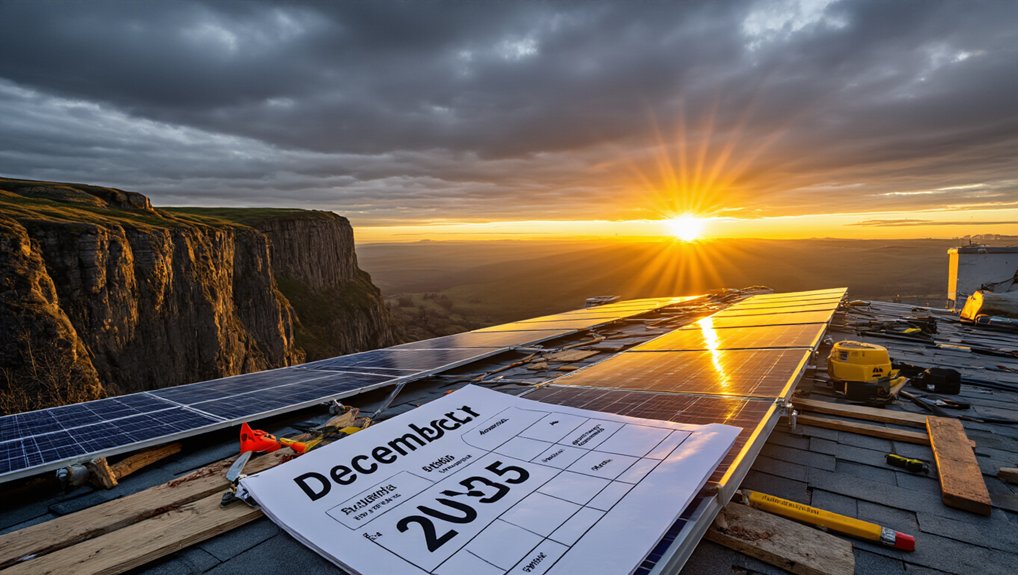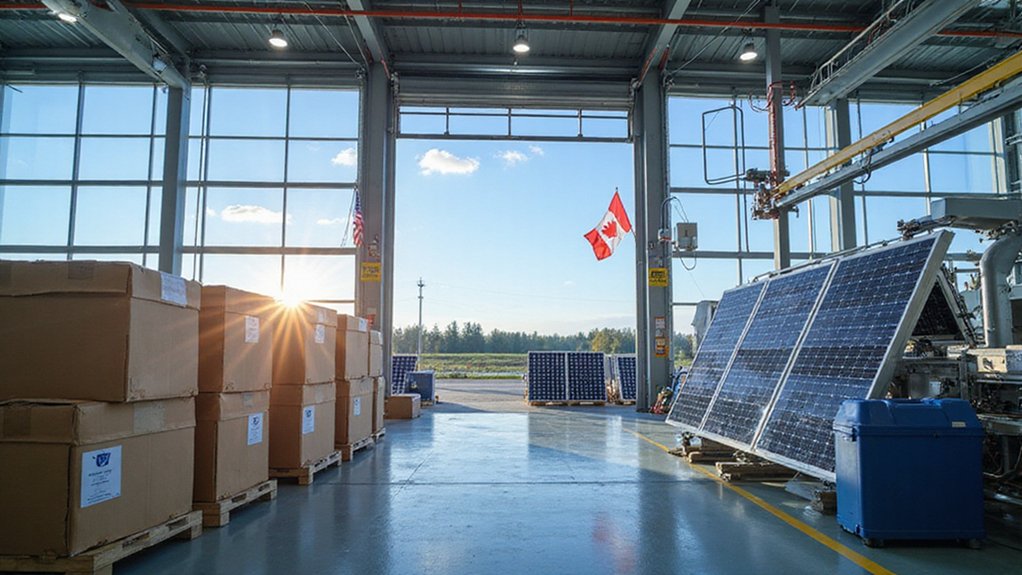While Nevada’s solar industry has been crushing it lately, ranking sixth nationally with over 7,982 megawatts of installed capacity, the whole thing could come crashing down if federal tax credits disappear. The Silver State has been riding high on solar success, with 32.53% of its electricity now coming from those shiny panels. Not bad for a desert.
The numbers tell a pretty sweet story. Over $12.5 billion has poured into Nevada’s solar market, creating 8,592 jobs across the state. Last year alone saw $2.3 billion in investments and 1,598 megawatts of new installations. Nevada Gold Mines even dropped a cool 200-megawatt project that now covers 20% of its electricity needs. Meanwhile, Carson City’s saving taxpayers $50,000 annually with its municipal solar setup. Nice.
But here’s where it gets dicey. That federal Investment Tax Credit? It’s basically the lifeblood of this whole operation. Right now, it knocks 30% off solar costs, turning a $27,108 system into an $18,976 deal. Without it, the math changes. Fast.
The average Nevada homeowner with solar saves $82,838 over 25 years. Their payback period? Six years. Pretty solid return. But yank those federal incentives, and suddenly that equation looks a lot less attractive. The industry knows this. They’re sweating bullets over potential policy changes. Nevada’s solar sector is projected to reach $819.2 million by 2025, but that growth depends heavily on continued federal support.
Nevada learned this lesson the hard way. Remember 2016? The state gutted its net metering policies and solar installations practically flatlined. They brought them back in 2017, but the damage was done. Trust takes time to rebuild.
Now, with 16.90% of Nevada homes sporting solar panels and projections showing another 11,504 megawatts coming online in five years, timing couldn’t be worse for federal uncertainty. The 106 solar companies operating in Nevada aren’t just worried about profits. They’re worried about survival. Many of these companies are banking on the state’s 1,000 MW storage target for 2030 to keep the momentum going.
The irony? Nevada’s perfectly positioned for solar dominance. Desert sun, growing demand, proven economics. But without stable federal support, this boom could go bust. Again. This challenge mirrors the energy storage issue that experts identify as critical for all renewable energy technologies nationwide. And this time, there might not be a comeback story.
References
- https://seia.org/wp-content/uploads/2025/06/Nevada.pdf
- https://seia.org/state-solar-policy/nevada-solar/
- https://www.ibisworld.com/united-states/industry/nevada/solar-power/31308/
- https://www.chooseenergy.com/solar-energy/solar-energy-production-by-state/
- https://www.energysage.com/local-data/solar/nv/








